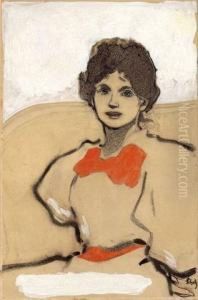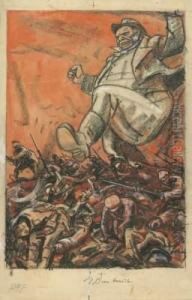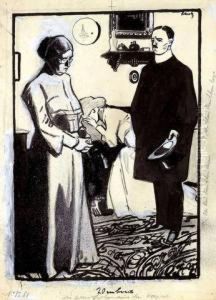Wilhelm Schulz Paintings
Wilhelm Schulz was a German painter and lithographer born in 1797 in Darmstadt, Germany. He is not to be confused with the similarly named Wilhelm Schultz or other historical figures such as political writers or cartoonists. Schulz's body of work mainly encompasses lithography, a printing process that was growing increasingly popular during the 19th century, allowing for the mass production of artworks.
Schulz received his training at the Düsseldorf Academy of Arts, which was one of the leading art schools in Germany at the time. The academy was known for its strong emphasis on academic drawing and painting, and it attracted students from all over Europe. Schulz's education there would have provided him with a solid foundation in the techniques and aesthetic values of the period.
During his career, Schulz was influenced by the Romantic movement, which was prevalent in the arts during his lifetime. Romanticism in Germany was characterized by an emphasis on emotion and individualism, as well as a glorification of the past and nature. Schulz's lithographs often depicted landscapes, historical scenes, and portraits. His style was marked by a keen attention to detail and a desire to convey a sense of realism in his works.
Wilhelm Schulz's contributions to the field of lithography were significant during his time. He was part of a generation of artists who explored and refined the technique of stone printing. In particular, Schulz was known for his ability to capture texture and subtle gradations of tone within his lithographs, a testament to his skill and the quality of his printing.
Despite his contributions, Wilhelm Schulz is not as widely recognized today as some of his contemporaries. This can be attributed to several factors, including the sheer number of artists working in similar mediums during the 19th century, as well as the often ephemeral nature of lithographs, which were reproduced in large quantities and not always preserved as carefully as paintings or sculptures.
Schulz's work was, however, appreciated during his lifetime, and his prints would have been circulated among art collectors and the middle class, contributing to the popular visual culture of the time. His lithographs not only served as works of art but also played a role in the dissemination of images and ideas, which was an essential aspect of the growing print media.
Wilhelm Schulz passed away in 1860, leaving behind a legacy as a skilled lithographer and contributor to the German art scene of the 19th century. His works, though less known today, remain an example of the craftsmanship and artistic expression of the era in which he lived.







